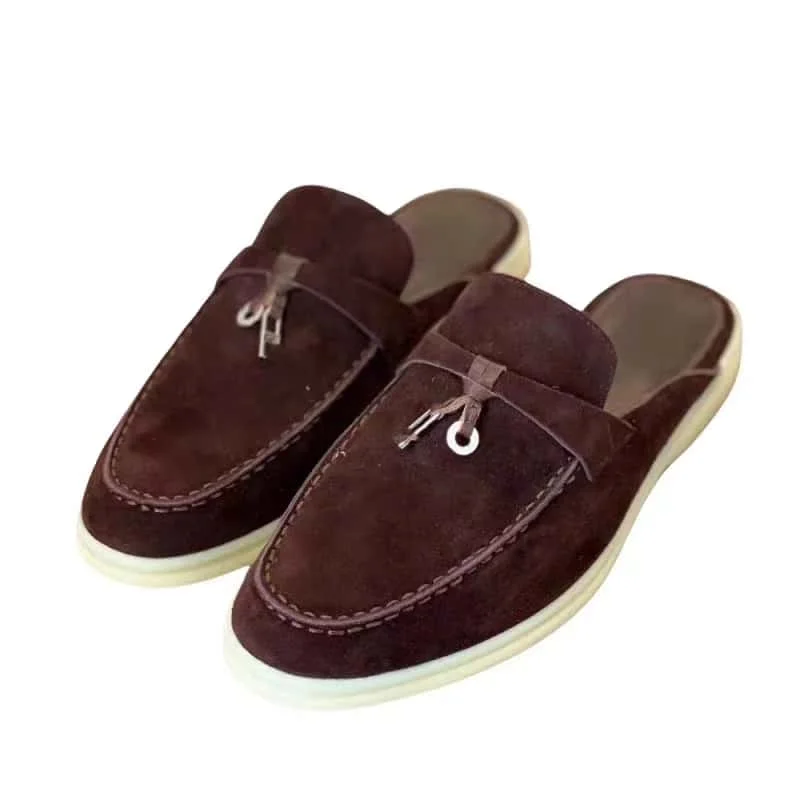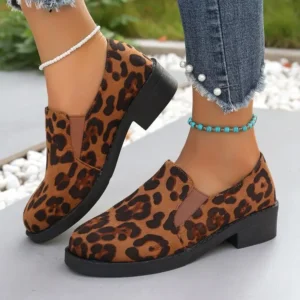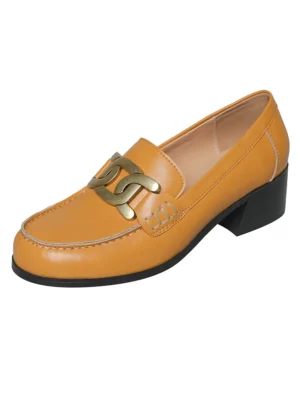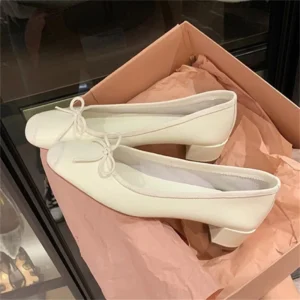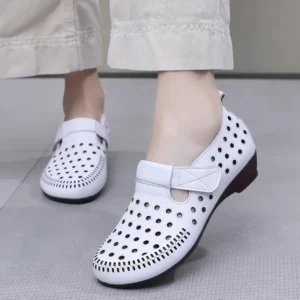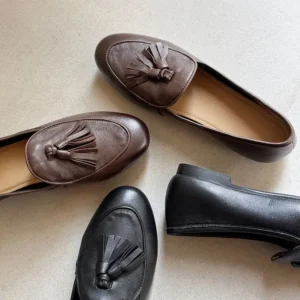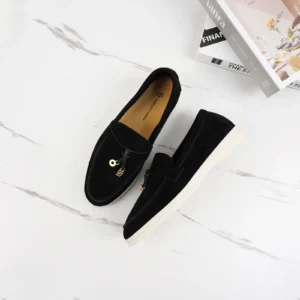Understanding the Timeless Appeal of Low Heel Loafers
Low heel loafers occupy that sweet spot in footwear that’s hard to find: shoes with a modest heel height of 0.5-1.75 inches (1.2-4.4 cm) that offer both style and genuine comfort. Unlike completely flat shoes that can lack support or high heels that strain your feet, low heel loafers provide that perfect balance your feet need for daily activities.
What makes these shoes so special is their versatility. They’ve evolved from purely functional footwear to fashion statements that work across age groups and style preferences. The slight elevation they provide isn’t just about aesthetics—it actually helps distribute your weight more evenly than completely flat shoes, reducing pressure on your heels and forefoot.
The beauty of specialized low heel loafer options is their ability to transition seamlessly from casual to formal settings. Whether you’re heading to the office, running errands, or meeting friends for dinner, these shoes provide:
- All-day comfort without sacrificing style
- Better posture support than completely flat shoes
- Versatility to pair with multiple outfit types
- Timeless appeal that transcends seasonal trends
Podiatrists often recommend low heel options over completely flat shoes, as the slight elevation can reduce strain on the Achilles tendon while providing better arch support. This makes them particularly valuable for those spending long hours on their feet.
The history of loafers dates back to Norwegian fishermen in the early 1900s, but they’ve since become refined fashion staples that blend comfort with sophistication. Today’s designs maintain that practical heritage while incorporating modern comfort technologies and style elements that make them appropriate for everything from business meetings to weekend outings.
For those wondering about professional settings, incorporating low heel loafers into professional settings can elevate your work attire while keeping you comfortable through long days.
Key Comfort Features to Look for in Daily Wear Loafers
When selecting loafers for everyday wear, certain comfort features make all the difference between shoes you can’t wait to take off and those you forget you’re wearing. Here’s what to prioritize:
Cushioning Technology
– Memory foam insoles: Contour to your foot’s unique shape, providing personalized comfort
– EVA (ethylene vinyl acetate): Lightweight with excellent shock absorption
– Poron: Delivers long-lasting cushioning that doesn’t compress over time
– Dual-density footbeds: Combine soft top layers with firmer support underneath
Arch Support
– Look for visible contours in the footbed that match your arch type
– Good arch support prevents fatigue and pain, particularly important for all-day wear
– Some premium loafers include removable insoles to accommodate custom orthotics
Shock Absorption
– Quality outsoles with rubber components absorb impact when walking
– Look for designs with extra cushioning at the heel strike area
– Layered sole construction often indicates better shock absorption
Toe Box Design
– Should provide adequate width and height for natural toe splay
– Too narrow toe boxes can cause cramping, blisters, and long-term foot problems
– Square or almond-shaped toe boxes often provide better comfort than pointy designs
Heel Construction
– A well-designed low heel distributes weight more evenly than completely flat shoes
– Look for slightly curved heel bases that follow the natural shape of your foot
– Heel cup should hold your foot securely without pinching
Weight Distribution
– The slight elevation of a low heel improves posture and reduces pressure points
– Properly balanced loafers prevent excessive strain on any one part of the foot
– Good weight distribution minimizes fatigue during all-day wear
For those specifically looking for walking comfort, detailed information on comfortable loafer features for walking can help you select the perfect pair for your lifestyle. Many people find that the most comfortable flat loafers incorporate these features while maintaining a streamlined profile.
Remember that comfort isn’t just a luxury—it’s an essential investment in your foot health, especially for shoes you’ll wear regularly.
Material Selection for Durability and All-Day Comfort
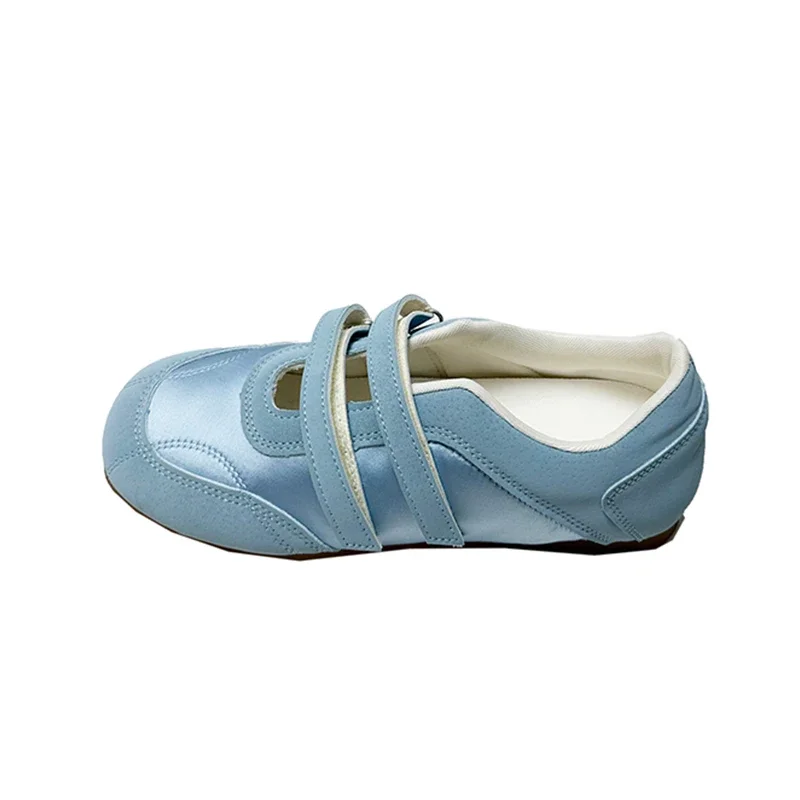
The materials used in your loafers significantly impact both their comfort and longevity. Here’s a breakdown of the most common options and what they offer:
Premium Leather Options
Full-grain leather represents the highest quality leather available, featuring the entire grain surface with all its natural markings. It molds to your foot over time, creating a custom fit. Though initially stiffer, it develops a beautiful patina and exceptional durability. Full-grain leather requires regular conditioning but rewards you with years of wear.
Nappa leather offers buttery softness right out of the box. This fine-grained leather provides immediate comfort with excellent breathability. It’s perfect for those who want premium feel without an extended break-in period. The supple nature makes it ideal for all-day wear, though it may show scratches more easily than tougher leathers.
Nubuck features a velvety surface created by lightly sanding top-grain leather. This creates an elegant, subtle texture with durability approaching full-grain leather. It requires waterproofing spray and regular cleaning with a specialized brush.
For those interested in quality options, our leather flat loafers collection showcases excellent craftsmanship and material selection.
Suede
Suede offers a luxurious, soft texture that adds visual interest to any loafer. Its versatility allows for rich color saturation and pairs beautifully with both casual and formal outfits. However, it requires waterproofing and special cleaning tools. For rainy climates, consider keeping suede loafers for fair-weather days. Our suede loafer options provide versatile styling potential for various occasions.
Vegan/Faux Leather
Modern vegan leathers have improved dramatically in recent years, with many offering impressive durability and appearance. These materials appeal to ethically-minded consumers while often providing good water resistance and easy care. Quality varies significantly between brands, so look for those with breathable construction to prevent foot perspiration.
Patent Leather
With its glossy, high-shine finish, patent leather makes a bold statement. It offers excellent water resistance and easy cleaning with just a damp cloth. However, the coating that creates its shine can sometimes reduce flexibility and breathability. Look for designs with strategic flexibility points and breathable linings.
Textile Options
Fabric loafers excel in breathability and lightweight comfort, making them ideal for warm weather. Canvas, linen, and technical knits allow air circulation while conforming well to foot shape. While generally less durable than leather, quality textile loafers with proper care can last several seasons.
Interior Lining Materials
Never overlook what touches your foot directly. Leather linings offer the best breathability and moisture-wicking properties, molding to your foot over time. Textile linings should be soft and seamless to prevent irritation. Memory foam or cushioned linings provide extra comfort but ensure they’re covered with moisture-wicking materials to prevent sweat buildup.
For detailed guidance on maintenance, our guide on caring for different loafer materials provides specific techniques to extend the life of your favorite pairs.
Finding Your Perfect Fit: Sizing and Fit Essentials
Finding the right fit in loafers can be trickier than with other shoe styles. Here’s how to ensure your loafers fit perfectly:
Signs of Proper Loafer Fit:
– Heel sits snugly in the back with minimal slippage when walking
– Widest part of your foot aligns with the widest part of the shoe
– Comfortable instep without pressure points
– About 3/8 to 1/2 inch (0.9-1.3 cm) of space between your longest toe and the end of the shoe
– No pinching at the sides or rubbing at the heel
Common Fit Issues and Solutions:
– Heel slippage: Try heel grips or consider a narrower width
– Too tight across toes: Look for wider toe boxes or size up
– Instep pressure: Seek styles with adjustable features like buckles
– Length issues: Remember that proper length includes some space beyond your longest toe
Material-Specific Considerations:
Leather loafers typically stretch 1/4 to 1/2 size with wear, particularly in width. They should feel snug but not painful when new. Synthetic materials stretch less, so fit should be closer to perfect from the start. Suede offers moderate give, while patent leather provides minimal stretch.
Width Considerations:
Many premium brands offer multiple width options. Look for designations like narrow (AA), medium (B), wide (C/D), or extra wide (E). Your foot width is just as important as length for proper fit.
Special Foot Shape Considerations:
– High arches: Look for styles with good instep height
– Wide forefoot: Choose almond or square toe shapes over pointed
– Narrow heels: Opt for styles with adjustable features or narrow heel cups
– Bunions: Seek soft, forgiving materials and wider toe boxes
Timing Your Shoe Shopping:
Always try on shoes later in the day when your feet are naturally more swollen. This ensures comfortable fit even after a long day of wear.
Between Sizes?
When between sizes, consider both length and width. For leather loafers, you might size down if they’ll stretch appropriately. For loafers with less give, size up and use inserts if needed.
Sock Considerations:
Decide whether you’ll typically wear loafers with or without socks, as this affects sizing. For sockless wear, consider guidance on wearing loafers without socks to maintain both comfort and professional appearance.
Remember that proper fit is essential for both comfort and shoe longevity—ill-fitting shoes wear unevenly and cause unnecessary strain on the materials.
The Ideal Heel Height for Everyday Comfort and Style
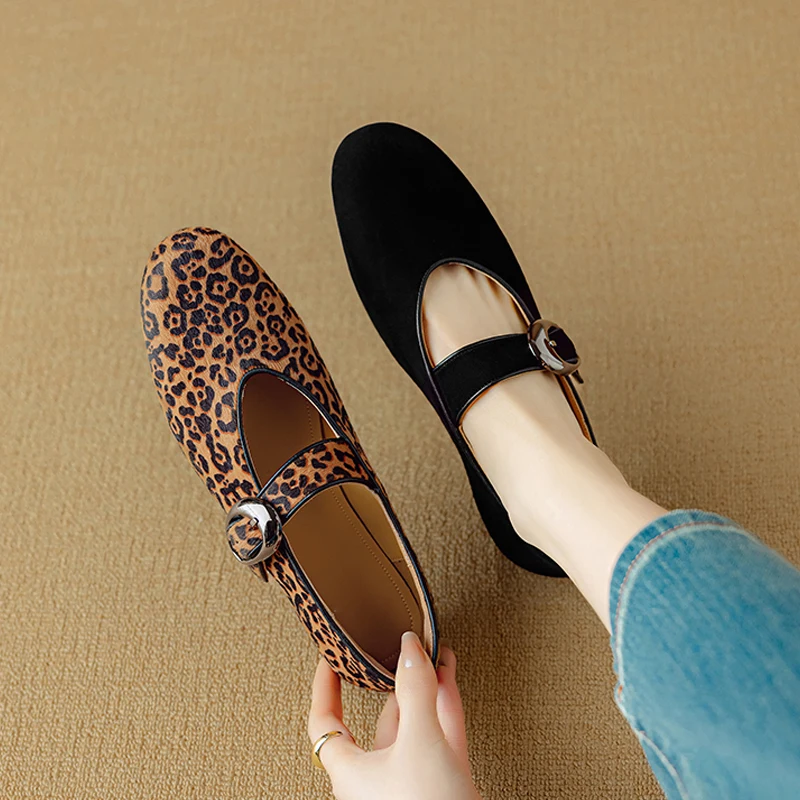
The perfect heel height for daily wear loafers typically falls between 0.5-1.75 inches (1.2-4.4 cm). This range hits the sweet spot between completely flat shoes and higher heels that can strain your feet after extended wear.
From a biomechanical perspective, a slight heel elevation offers several advantages over completely flat shoes:
- Better weight distribution across the foot
- Reduced pressure on the heel bone
- Decreased strain on the Achilles tendon
- Improved arch support for many foot types
- Enhanced posture alignment
Different heel styles provide varying benefits for daily loafers:
Block Heels
Block heels distribute weight more evenly and provide excellent stability. Their broader base makes them ideal for all-day walking and standing. For quality options with this supportive design, explore our block heel options that provide stable support.
Stacked Heels
Built from layers of material (traditionally leather), stacked heels offer a classic look with good durability. The layered construction often provides better shock absorption than solid heels.
Modest Wedges
Wedge designs connect the heel and forefoot, providing continuous support along the entire foot. This design can be particularly comfortable for those with arch issues or who need more stability.
The relationship between heel height and comfort isn’t just about the height measurement but also about the heel’s design and its relationship to the rest of the shoe. A well-designed 1-inch (2.5 cm) heel with proper arch support will typically be more comfortable than a poorly designed completely flat shoe.
Finding Your Personal Sweet Spot:
Your ideal heel height depends on several factors:
– Your natural arch height (higher arches often benefit from slightly higher heels)
– Foot flexibility
– Personal comfort preference
– Primary activities while wearing the shoes
Activity-Specific Recommendations:
For primarily walking: 0.5-1 inch (1.2-2.5 cm) provides subtle elevation with minimal strain.
For standing for extended periods: 0.75-1.25 inches (1.9-3.2 cm) offers ideal support without putting pressure on the ball of the foot.
For commuting with varied activities: 0.5-1 inch (1.2-2.5 cm) with cushioned insoles provides versatility.
When considering professional footwear options, many find that loafers compare favorably to other heel types for work in terms of both comfort and style appropriateness.
Remember that quality construction matters more than specific height—a well-made 1.5-inch (3.8 cm) heel can feel more comfortable than a poorly made 0.5-inch (1.2 cm) option.
Essential Loafer Styles for Versatile Daily Wear
The world of loafers offers diverse styles that combine comfort with varying aesthetic appeals. Here are the essential styles to consider for your daily rotation:
Classic Penny Loafers
Featuring the distinctive strap across the vamp with a diamond-shaped slot (originally designed to hold a penny), these timeless shoes offer unmatched versatility. They pair easily with both casual jeans and formal trousers, making them true wardrobe workhorses. Modern interpretations include slim profiles, contrast stitching, and updated materials while maintaining the recognizable silhouette. Our classic penny loafer options showcase this enduring style.
Elegant Horsebit Loafers
Distinguished by the metal hardware across the vamp (inspired by equestrian gear), horsebit loafers project sophisticated elegance. Their refined appearance makes them perfect for business casual environments, while their comfort allows for all-day wear. These loafers elevate casual outfits and complement formal wear with equal success.
Tassel Loafers
Adorned with decorative tassels on the vamp, these loafers bring a touch of traditional charm to any outfit. They occupy a sweet spot between casual and formal, working beautifully with everything from chinos to suits. The tassels add visual interest without overwhelming the shoe’s profile. Our tassel loafer styles for versatile wear offer various interpretations of this classic design.
Lug-Sole Loafers
With their thick, treaded soles, lug-sole loafers bring modern edge and practical benefits to the traditional loafer silhouette. The substantial soles provide excellent traction and weather resistance, making them ideal for fall and winter. They add a contemporary, slightly edgy element to classic outfits.
Driving Loafers
Originally designed for driving sports cars, these ultra-flexible loafers feature rubber-nubbed soles that extend up the back of the heel. Their exceptionally comfortable, glove-like fit makes them perfect for casual wear, though they typically offer less structure and support for extensive walking.
Smoking Slipper Style
With their streamlined silhouette and minimal embellishment, smoking slipper-style loafers offer refined elegance with a touch of luxurious flair. Often crafted from velvet or fine suede, these flat-soled, slightly elongated loafers bring sophisticated charm to both casual and formal outfits.
Minimalist Modern Loafers
Clean lines and pared-back design define modern minimalist loafers. Free from traditional embellishments like tassels or hardware, these contemporary interpretations focus on sleek profiles and quality materials. Their simplicity makes them exceptionally versatile and often appropriate for more formal settings.
For those navigating professional environments, our guidance on selecting loafer styles for professional settings provides detailed advice on choosing appropriate styles for different workplace dress codes.
Critical Construction Details for Long-Lasting Loafers
The difference between loafers that last six months versus six years often comes down to construction details that aren’t immediately visible. Here’s what to look for:
Quality Stitching Indicators
Premium loafers feature dense, even stitching with consistent spacing and tension. Look for:
– 8-10 stitches per inch for optimal strength and flexibility
– Double or reinforced stitching at stress points
– Clean, recessed stitching along the sole edge
– No loose threads, skipped stitches, or uneven tension
Superior Sole Attachment Methods
The way the sole attaches to the upper significantly impacts durability:
Goodyear welt construction involves a strip of leather (the welt) that attaches the upper to the sole, creating a water-resistant seal. This method allows for resoling, extending the shoe’s life significantly.
Blake stitch construction directly connects the upper to the sole with an interior stitch, creating a flexible, sleek profile. While still resoleable, it requires specialized equipment.
Cemented (glued) construction is less durable and typically can’t be resoled, though modern adhesives have improved its longevity.
Internal Structure Importance
Quality loafers contain hidden structural elements:
– A steel or fiberglass shank between the insole and outsole provides stability
– A structured counter (heel reinforcement) maintains shape
– Internal toe reinforcement prevents collapse
Edge Finishing
Well-finished edges resist water penetration and wear. Look for:
– Smooth, sealed edges on leather soles
– Clean transitions between materials
– Precise trimming without rough areas
Hardware Quality Assessment
Metal elements should be:
– Securely attached with reinforced backing
– Made from solid, not hollow, metal
– Finished to prevent tarnishing or corrosion
– Functional as well as decorative
Warning Signs of Poor Construction
Be wary of:
– Visible glue excess around seams
– Irregular or sparse stitching
– Synthetic materials disguised as leather
– Cardboard instead of leather insoles
– Heel attachments secured only with visible nails
Value of Hand-Finished Details
Hand-finished elements indicate attention to detail:
– Burnished toe caps or edges
– Hand-stitched details like medallions
– Custom-colored or antiqued leathers
– Hand-polished finishes
These construction details not only determine how long your loafers will last but also how well they’ll maintain their comfort and appearance over time.
Styling Your Low Heel Loafers for Any Occasion
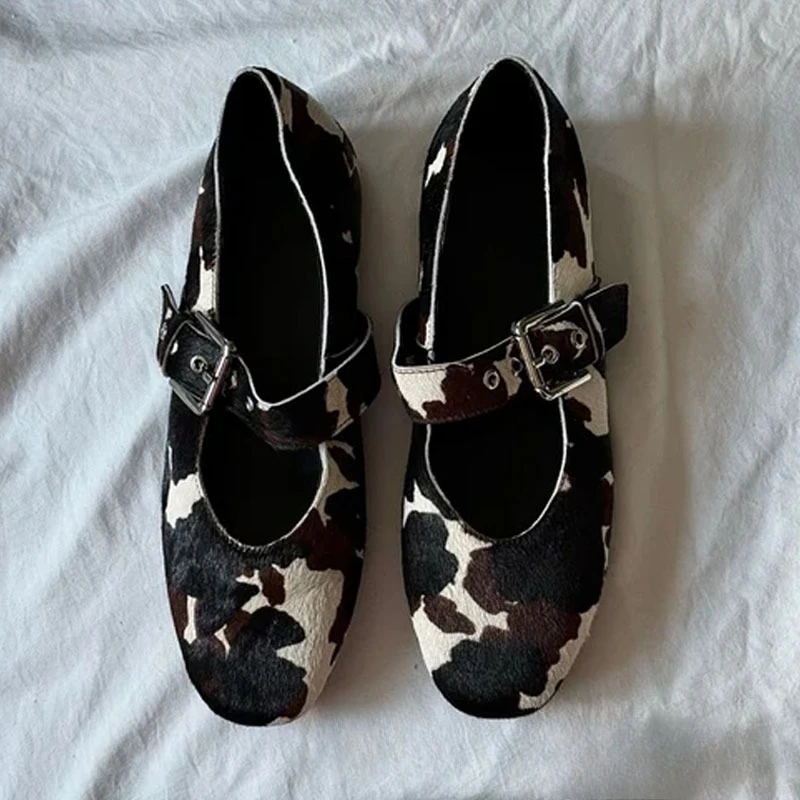
Low heel loafers bridge the gap between casual and formal, making them incredibly versatile for various settings. Here’s how to style them for different occasions:
Business Casual Elegance
– Pair penny or horsebit loafers with tailored ankle-length trousers and a crisp button-down shirt
– Style tassel loafers with a pencil skirt and structured blazer
– Combine minimalist loafers with wide-leg culottes and a silk blouse
– Add loafers to a sheath dress for professional comfort with polish
For more specific workplace styling ideas, explore our guide on styling loafers in business casual settings.
Smart Casual Versatility
– Elevate dark-wash straight-leg jeans with tassel or penny loafers and a tucked-in quality t-shirt
– Pair chinos with driving loafers and a casual button-down with rolled sleeves
– Add horsebit loafers to a casual dress with a denim jacket
– Style smoking slipper loafers with tailored shorts and a linen shirt for upscale warm-weather looks
Weekend Casual Chic
– Combine penny loafers with straight-leg jeans and an oversized sweater
– Add driving loafers to a midi skirt and t-shirt for effortless style
– Pair lug-sole loafers with leggings and an oversized shirt jacket
– Style tassel loafers with shorts and a crisp white shirt for elevated summer looks
Seasonal Adaptations
Warm Weather Styling:
– Embrace bare ankles with slightly cropped pants or skirts
– Choose lighter colors like tan, cream, or pastels
– Opt for perforated styles or those in breathable materials
– Pair with linen clothing for cohesive summer sophistication
Cold Weather Options:
– Style with coordinated tights or trouser socks
– Choose darker colors or richly textured materials like suede
– Pair with ankle-length trousers or cuffed jeans that cover the ankle
– Add to sweater dresses with tights for winter-appropriate elegance
Color Coordination Principles
Neutral loafers (black, brown, tan, navy) work as wardrobe foundations and pair easily with most colors. For statement loafers like leopard print loafer options, treat them as a neutral with solid-colored clothing, or make them the focal point of a simple outfit.
Accessorizing with Loafers
– Match leather bags to leather loafers for polished coordination
– Echo hardware colors (gold bits on loafers with gold jewelry)
– Consider the formality level—more structured bags pair well with classic loafer styles
For professional settings, our guide on styling loafers for professional settings provides specific advice on maintaining workplace-appropriate looks while enjoying loafer comfort.
Our Top Picks: Best Low Heel Loafers for Daily Comfort
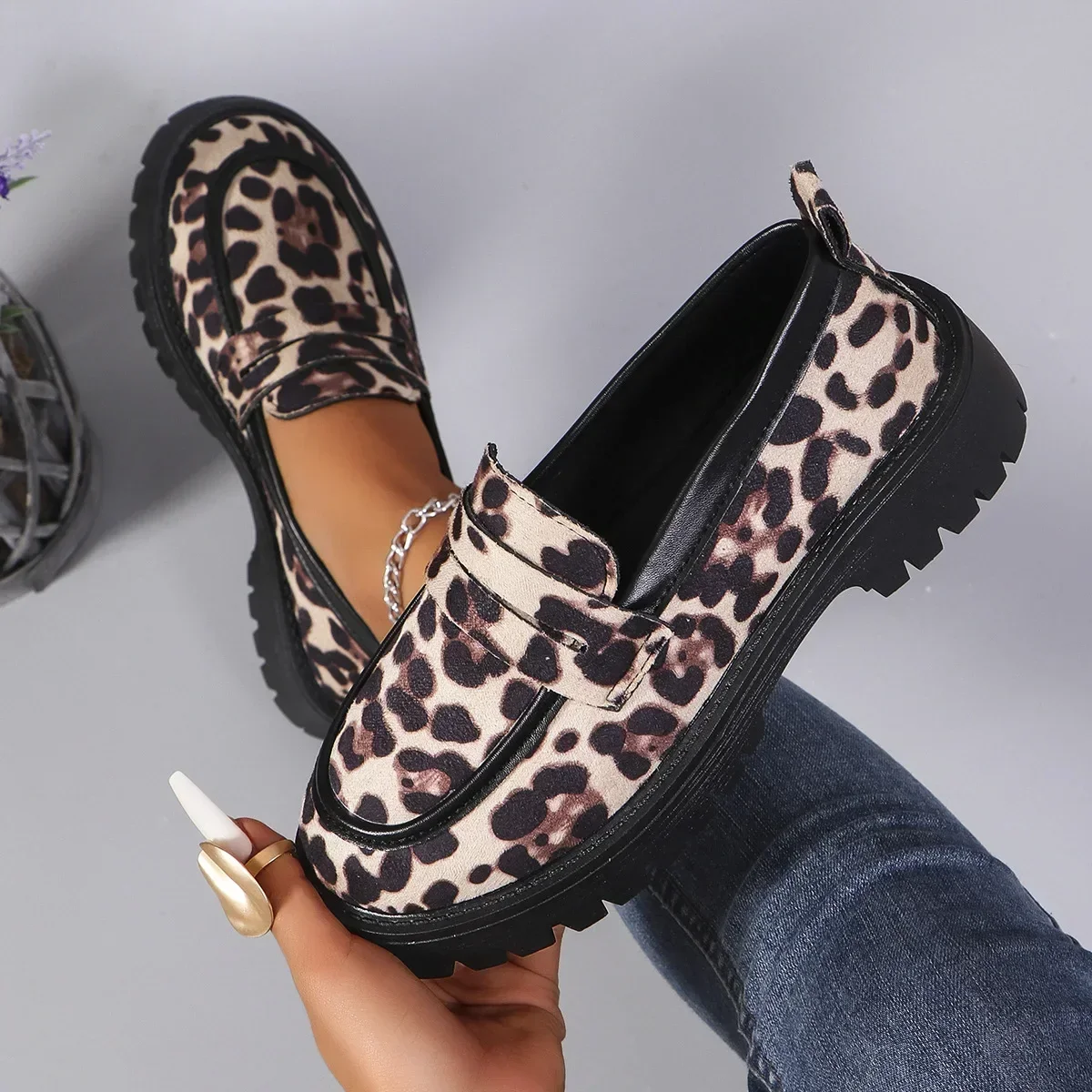
At Artisan Haul, we evaluate loafers based on construction quality, comfort features, materials, and versatility. After thorough testing that includes extended wear periods and various walking conditions, we’ve identified these standout performers:
Best Overall for All-Day Comfort
These exceptional loafers feature premium cushioning with multi-layer insoles that combine memory foam with firmer supportive layers. Their anatomically designed footbed provides excellent arch support without feeling intrusive. Crafted from supple yet durable full-grain leather, they mold to your foot while maintaining structure. The 1-inch (2.5 cm) heel height offers ideal elevation for weight distribution.
Best for Professional Settings
Elegant design meets workplace comfort in these refined loafers. With a sleek silhouette and minimal ornamentation, they project professional polish while the concealed comfort features ensure all-day wearability. The 1.25-inch (3.2 cm) block heel provides stable support during long meetings, while the slightly elongated toe creates a sophisticated silhouette. For comprehensive information on appropriate footwear for work environments, explore our recommendations for office-appropriate loafers.
Most Durable for Heavy Daily Use
These workhorse loafers feature reinforced stitching at stress points and Goodyear welt construction that allows for resoling. The full-grain leather upper develops a beautiful patina with wear rather than showing damage. With protective toe caps and heel counters, these loafers maintain their structure even with daily wear.
Women's Comfortable Flat Loafers, Women's Leopard Print Loafers, Women's Low Heel Loafers
$82.50 Select options This product has multiple variants. The options may be chosen on the product pageWomen's Block Heel Loafers, Women's Heeled Penny Loafers, Women's Monk Strap Loafers
$194.04 Select options This product has multiple variants. The options may be chosen on the product pageWomen's Block Heel Loafers, Women's Square Heel Loafers, Women's Square Toe Flat Loafers
Price range: $73.61 through $86.41 Select options This product has multiple variants. The options may be chosen on the product pageWomen's Comfortable Flat Loafers, Women's Leather Flat Loafers, Women's Round Toe Flat Loafers
$124.88 Select options This product has multiple variants. The options may be chosen on the product pageWomen's Black Flat Loafers, Women's Black Penny Loafers, Women's Classic Tassel Loafers
$194.28 Select options This product has multiple variants. The options may be chosen on the product pageWomen's Loafer Mules, Women's Suede Flat Loafers
$190.23 Select options This product has multiple variants. The options may be chosen on the product page
Best for Walking and Commuting
Designed specifically for movement, these loafers incorporate athletic shoe technology into their classic silhouette. The shock-absorbing midsole cushions impact, while the flexible construction moves naturally with your foot. The rubber outsole with strategic tread pattern provides excellent traction on various surfaces, and the breathable lining prevents moisture buildup during extended walking.
Top Arch Support Option
These specialized loafers feature contoured footbeds with pronounced arch support that helps prevent fatigue. Their biomechanical design encourages proper foot alignment and distributes pressure evenly. With cushioning focused on high-impact areas and a supportive 1-inch (2.5 cm) heel, these loafers are ideal for those with specific arch support needs.
Most Versatile Style
These chameleon loafers transition effortlessly between different dress codes and occasions. Their clean lines and moderate ornamentation work equally well with jeans, trousers, skirts, and dresses. Available in versatile neutral colors, these loafers feature a 0.75-inch (1.9 cm) heel that balances style and comfort.
Best Value Investment
Offering exceptional quality at a reasonable price point, these loafers feature construction details typically found in more expensive footwear. With Blake-stitched soles that can be resoled and quality leather uppers that improve with age, they provide long-term value despite their mid-range price. Strategic reinforcement in high-wear areas extends their lifespan significantly.
For professional environments that require more formal footwear, our comprehensive information on selecting professional loafers can help you make an informed choice.
Essential Care and Maintenance for Long-Lasting Loafers
Proper care significantly extends the life of your loafers, protecting your investment while maintaining their appearance and comfort. Here’s how to care for different types:
Day-to-Day Care Habits
– Rotate between at least two pairs of loafers to allow them to dry and recover their shape
– Use cedar shoe trees when loafers aren’t being worn to absorb moisture and maintain shape
– Brush leather loafers briefly after each wear to remove dust and prevent buildup
– Allow loafers to air out for 24 hours between wearings
– Use protective sprays appropriate for the material before first wear
Material-Specific Care
Leather Cleaning and Conditioning
1. Remove dust and dirt with a soft brush
2. Wipe with a slightly damp cloth if necessary
3. Apply leather conditioner every 5-10 wearings
4. Allow conditioner to absorb for several hours
5. Buff with a soft cloth to restore shine
6. Apply polish in a matching color for smooth leathers
Suede Protection and Cleaning
1. Apply suede protector spray before first wear
2. Use a suede brush to remove surface dirt, brushing in one direction
3. For stubborn marks, use a specialized suede eraser
4. Refresh nap with a suede brush after cleaning
5. Reapply protector spray seasonally
Faux Leather/Synthetic Maintenance
1. Wipe with a damp cloth and mild soap solution
2. Avoid oil-based products that can degrade synthetic materials
3. Use specialized vinyl/synthetic cleaners for tougher dirt
4. Apply synthetic protectant to prevent drying and cracking
Patent Leather Care
1. Wipe with a soft cloth dampened with water
2. Use patent-specific cleaners for stubborn marks
3. Apply patent leather cream occasionally to prevent drying
4. Store with tissue paper to prevent sticking and creasing
Addressing Common Issues
Scuff Treatment
– For smooth leather: Rub with a small amount of conditioner
– For suede: Use a suede eraser followed by brushing
– For patent leather: Wipe with petroleum jelly on a soft cloth
Water Damage Prevention and Repair
– Apply waterproofing spray appropriate for the material
– For water spots on leather: Let dry completely then condition
– For salt stains: Mix equal parts water and vinegar, apply lightly, then condition
Sole Wear Patterns
– Address uneven wear early with professional help
– Protect leather soles with rubber sole protectors
– Consider heel tip replacement when wear becomes visible
Hardware Maintenance
– Clean metal bits with a soft cloth and metal polish
– Tighten any loose hardware immediately
– Protect metal parts from prolonged exposure to moisture
When to Seek Professional Repair
– Resoling: When the sole shows significant wear but upper remains in good condition
– Heel replacement: When heel shows excessive wear on one side
– Stretched or misshapen uppers: Professional reshaping can often restore form
– Torn stitching: Professional repair prevents further damage
– Color restoration: For faded or scratched leathers
Professional shoe repair services can significantly extend the life of quality loafers, making them a worthwhile investment for footwear you love.
Expert Tips for Breaking In New Loafers Comfortably
The breaking-in period can make or break your relationship with new loafers. Here’s how to navigate this process comfortably:
Start Gradually
Begin with 1-2 hours of wear indoors, then gradually increase duration. This allows the leather to warm and begin conforming to your foot shape without risk of blisters from extended first wear.Use Material-Specific Techniques
For leather loafers, apply leather conditioner to soften stiff areas before wearing. For synthetic materials, which stretch less, look for targeted stretching sprays designed for synthetic footwear.Recognize Warning Signs
Normal breaking-in discomfort includes slight tightness that eases as you walk. Pain that increases, significant pinching, or rubbing that causes skin irritation indicates fit problems rather than normal break-in.Apply Strategic Stretching
For tight spots, use a shoe stretcher overnight with stretching spray. Focus on specific areas like tight toe boxes or narrow width. For leather loafers, wear them with thick socks around the house to gently expand the material.Create a Wearing Schedule
Wear new loafers every other day initially, alternating with well-broken-in shoes. Increase wearing time progressively: 2 hours the first day, 3-4 the next wearing, and so on.Protect Potential Blister Areas
Apply moleskin or silicone heel protectors to spots where rubbing occurs. These protective barriers prevent skin irritation while the shoes conform to your feet.Consider Professional Services
For persistent tight spots, professional cobblers can use stretching machines to target specific areas without damaging the shoe structure. This is particularly valuable for expensive loafers or those made from delicate materials.Recognize Break-In Limitations
If after 5-7 wearings loafers still cause discomfort, they may never properly break in. Quality loafers should start feeling noticeably more comfortable after 3-5 wearings. Persistent pain, particularly in the width or toe box, usually indicates an incorrect size rather than insufficient break-in.
Remember that different materials require different break-in approaches. Full-grain leather may take longer but will ultimately conform more perfectly to your foot, while softer leathers like calfskin often require minimal breaking in.
How to Assess Value: Investing in Quality Daily Loafers
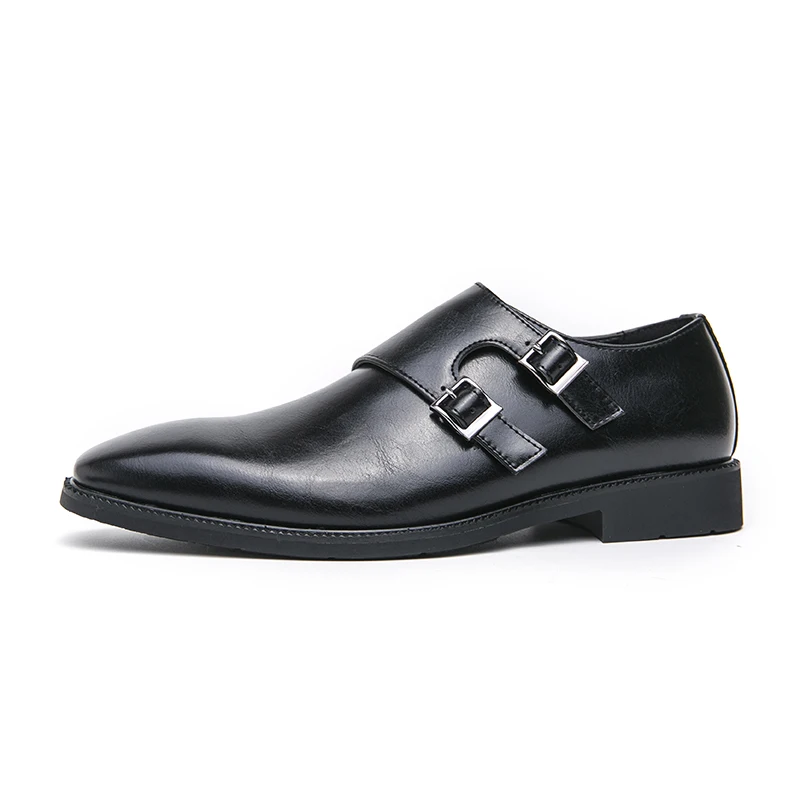
When considering an investment in quality loafers, understanding true value beyond the price tag helps make smarter purchasing decisions:
Cost-Per-Wear Calculation
Quality loafers might cost $150-$350, while budget options might be $50-$80. However, premium loafers often last 5+ years with proper care, while budget pairs typically last 6-18 months. Calculate:
Cost ÷ (Wearings before replacement) = Cost per wear
A $300 loafer worn 400 times costs $0.75 per wear, while an $80 loafer worn 80 times costs $1 per wear. The higher initial investment often results in better long-term value.
Recognizing False Economy
Budget loafers often show false savings through:
– Corrected-grain leather that cracks rather than develops patina
– Synthetic insoles that compress permanently
– Cemented soles that can’t be replaced when worn
– Poor interior construction causing premature lining wear
Construction Features Worth the Investment
– Goodyear welted or Blake stitched soles (allow resoling)
– Full-grain leather uppers (improve with age)
– Leather insoles and linings (conform to feet and breathe)
– Reinforced heel counters (maintain structure)
– Hand-finished details (indicate attention to quality)
When Higher Prices Reflect Quality
Higher prices are justified when they represent:
– Better materials (full-grain vs. corrected leather)
– Superior construction methods (stitched vs. glued)
– Ethical manufacturing practices
– Skilled handwork in construction
– Design innovation for comfort or durability
Repair Potential Assessment
Quality monk strap loafer options and other premium styles are designed with repair in mind. Look for:
– Stitched (not glued) sole attachment
– Quality leather uppers worth restoring
– Heel construction that allows replacement
– Reputation for accepting repairs (some brands offer repair services)
Timeless Design Value
Loafers with classic silhouettes and minimal trendy details offer better value as they remain stylish year after year. Conservative color choices in quality materials typically outlast fashion cycles.
Warning Signs of Overpricing
Be cautious of high prices primarily justified by:
– Logo prominence rather than quality materials
– Trendy designs likely to look dated quickly
– Basic construction methods typical of lower-priced shoes
– Synthetic materials masquerading as premium options
The best value investments are loafers that balance quality construction with timeless design at a fair (not necessarily low) price point. These will provide years of comfortable, stylish wear with proper care.
Addressing Common Foot Concerns with Specialized Loafers
Different foot structures and conditions require specific features in loafers. Here’s how to address common foot concerns:
High Arches
People with high arches need additional cushioning and shock absorption since their feet don’t naturally distribute weight effectively. Look for:
– Deep heel cups that cradle and support
– Substantial cushioning throughout the footbed
– Adequate volume in the shoe to accommodate high insteps
– Flexible materials that conform to the pronounced arch curve
Flat Feet
Those with flat feet require stability features and proper arch support:
– Structured arch support to prevent overpronation
– Firmer midsoles that resist excessive flexing
– Supportive heel counters to stabilize the rear foot
– Motion control features that prevent inward rolling
Wide Feet
For wide feet, adequate room prevents pressure points and discomfort:
– Brands that offer dedicated wide width options (C/D or E width)
– Rounder toe boxes rather than pointed styles
– Adjustable features like monk straps for customizable fit
– Soft, forgiving leathers with natural stretch
Narrow Heels
Preventing heel slippage is crucial for those with narrow heels:
– Loafers with elastic inserts at the sides for snugger heel fit
– Styles with adjustable straps across the instep
– Padded heel collars that grip the heel
– Adding heel grips or tongue pads to customize fit
Bunions and Hammertoes
These conditions require accommodative features:
– Soft, flexible leathers or materials that won’t create pressure
– Wide toe boxes with extra depth
– Seamless construction in problem areas
– Styles without decorative elements that might press on sensitive areas
Plantar Fasciitis
This painful condition needs specific support:
– Contoured footbeds with pronounced arch support
– Deep heel cups that stabilize and cushion
– Firm midsoles that prevent excessive foot flexion
– Shock-absorbing materials in the heel area
General Foot Fatigue
For overall comfort and reduced fatigue:
– Lightweight construction to reduce lifting effort
– Shock-absorbing midsoles throughout the entire foot
– Balanced heel-to-toe drop (often around 0.5-0.75 inches/1.3-1.9 cm)
– Flexible forefoot areas that reduce energy expenditure when walking
Removable Insoles
Many premium loafers feature removable insoles that allow:
– Insertion of custom orthotics
– Replacement with specialized insoles for specific conditions
– Adjustment of volume for better fit
– Extended shoe life by replacing worn insoles
Remember that while good shoe design can address many foot concerns, persistent foot pain should always be evaluated by a podiatrist who can provide personalized recommendations.
Frequently Asked Questions About Low Heel Loafers
Can low heel loafers be worn without socks?
Yes, loafers were originally designed to be worn without socks. However, to maintain hygiene and comfort, consider using no-show liner socks or applying foot powder to absorb moisture. Sockless wear typically works best with leather-lined loafers that wick moisture. For workplace appropriateness, see our guide on loafers in formal business settings.
How much heel height is ideal for all-day standing?
For all-day standing comfort, most podiatrists recommend a heel height between 0.5-1 inch (1.3-2.5 cm). This slight elevation reduces pressure on the Achilles tendon while avoiding the forefoot strain caused by higher heels. The ideal height varies based on your foot structure and arch height.
Are loafers appropriate for formal occasions?
Traditional formal events typically call for more structured shoes like oxfords. However, high-quality leather loafers without casual details (like tassels or chunky soles) are increasingly accepted in many formal settings. Patent leather or highly polished loafers offer a more formal appearance suitable for less traditional formal events.
How often should quality loafers be replaced?
Well-constructed loafers with proper care can last 5-8 years of regular wear. Signs it’s time for replacement include: structural damage to the upper that can’t be repaired, worn-through soles that have been replaced multiple times, deformed footbeds that no longer provide support, or interior lining deterioration that causes discomfort.
Can loafers provide enough support for people with foot problems?
Quality loafers with appropriate features can provide excellent support for many foot conditions. Look for contoured footbeds, proper arch support, and adequate cushioning. However, severe foot problems may require custom orthopedic footwear or custom orthotics inserted into loafers with removable insoles.
What’s the difference between men’s and women’s loafer construction?
Women’s loafers typically feature narrower heel cups, slightly narrower toe boxes, and often have less substantial soles than men’s versions. Women’s styles may incorporate more decorative elements and color options, while men’s tend toward traditional designs. Construction methods and quality features remain similar between genders in premium brands.
Are expensive loafers really worth the investment?
Higher-priced loafers are worth the investment when the price reflects superior materials, construction methods that allow repairs, and comfort technologies that improve wearability. Quality indicators that justify higher prices include full-grain leather, Goodyear or Blake stitching, leather linings and insoles, and thoughtful comfort features.
Why Low Heel Loafers Continue to Dominate Daily Footwear Choices
Low heel loafers have earned their place as footwear favorites by masterfully balancing comfort, style, and versatility in a way few other shoe types can match. Their modest heel height provides just enough elevation to improve posture and weight distribution without sacrificing stability or causing the discomfort associated with higher heels.
Unlike trendy footwear that cycles in and out of fashion, well-designed loafers possess a timeless quality that transcends seasonal changes. This enduring appeal makes them a practical investment—they won’t look dated next year or even five years from now.
Quality loafers represent more than just a shoe purchase; they’re an investment in daily comfort and foot health. The support features found in premium loafers—proper arch support, quality cushioning, and appropriate structure—contribute to overall well-being, especially for those who spend significant time on their feet.
There’s also an environmental and economic case for investing in durable, repairable footwear. Quality loafers with Goodyear welt or Blake stitch construction can be resoled multiple times, keeping them out of landfills while providing better value over time than disposable fashion footwear.
As you consider your next footwear purchase, prioritize construction quality and proper fit over fleeting trends or bargain prices. Your feet will thank you with each comfortable step, and your wardrobe will benefit from the versatile style that only well-made low heel loafers can provide.

